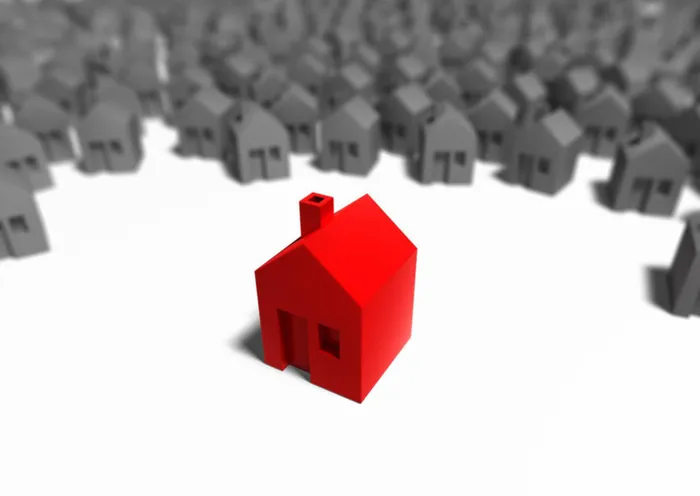Crime doesn’t pay when you sell

File photo: Sxc.hu File photo: Sxc.hu
Durban - A crime wave through your suburb could knock off more than five percent of the value of your home, a new study has revealed.
The study, conducted by Lightstone Property, shows that properties in some Durban suburbs that generally sell for around R800 000 – and where there has been a spike in crime – are worth around R48 800 less than in areas where there has been a crime decrease.
The study looked at residential inflation for properties valued at R800 000 between 2011 and 2013 and compared them with the police crime statistics.
Lightstone used its crime risk metric (a set of characteristics that distributes police district crime statistics into a granular spatial environment like suburbs) in conjunction with repeat sales indices to determine the value of about six million residential properties in the four major metropolitans – Durban, Johannesburg, Pretoria and Cape Town.
In Durban, the homes sold around the area of the Cato Manor police station, which reported a decrease in crime, were compared to the homes sold around Westville and Mayville police stations, which reported an increase in crime over a three-year period.
The study showed that R800 000 homes around Cato Manor increased to R976 325 while homes in Westville and Mayville increased to R927 528 over that period, a difference of R48 797 – about 5 percent.
“Not only does crime growth have a direct impact on property inflation, but past high crime experience in an area has lasting effects that subdue property price growth for years to come,” said Paul-Roux de Kock, data and analytics director at Lightstone.
“This indicates that one year of high crime growth in an area can be to the detriment of homeowners for at least two years before the effect starts to slowly taper off as time passes.
“This ‘bad reputation effect’ takes a while to catch on, but reaches a peak within the first two years after a crime wave has hit, and can have a long lasting effect on property inflation in the following years,” he said.
“The converse is also true in the sense that a huge reduction in residential crime will generally also positively impact property price growth in the years to come,” he added.
According to the latest police crime statistics released in September, there were 279 744 robberies and burglaries at homes across the country.
Nationally, robberies at residential premises went up by 7.4 percent from 17 950 in 2013 to 19 284 last year.
Robberies at homes in KwaZulu-Natal totalled 4 119 in 2012/13 and dipped to 4 099 last year, a 0.5 percent decrease.
Ten years ago, there were only 1 435 cases, which means there were 2 664 more incidents than a decade ago.
Home burglaries nationwide dipped 0.6 percent from 262 113 cases in 2013 to 260 460 last year.
KZN showed a similar trend with a decrease of 1 428 from 45 483 cases in 2013 to 44 055 last year. This means that for every 10 0000 people in KZN, 421 of them had their homes burgled.
In 2004/5 only 43 122 homes were burgled in KZN.
De Kock said Lightstone found that there was a very strong relationship between contact crimes experienced in estates and sectional schemes, and the house price growth experienced in that same year.
Homes in estates and gated communities dropped at a faster rate than free-standing homes, he explained.
“One explanation would be that the combined effect of these closed communities, and the nature of contact crimes, normally result in people within the community spreading the news faster.
“Potential buyers are therefore more likely to come to know about the crime wave, and potential sellers were likely to sell at a lower price that same year,” he said.
“Lightstone estimates that a 20 percent increase in contact crimes generally results in about a 0.4 percentage point drop in residential price growth in estates experienced during that same year.
“That may not sound like much, but considering that luxury properties currently only grow at around 4.5 percent year on year, homeowners lose out on almost a tenth of the growth they could’ve experienced during that year.”
Mino Coppola, a Pam Golding estate agent who operates in the Upper Highway area where home prices range in the millions, agreed that crime can affect the price of property.
He said that even after the crime wave that had hit the area two years ago had subsided, the perception lingered in potential buyers who avoided certain areas.
He said that while the prices for homes in the Kloof and Hillcrest areas had not dropped there were certain areas – where some of the crimes were committed – where the year-on-year value did not increase compared with neighbouring suburbs.
“There are particular positions in the different suburbs that people tend to stay away from. Prices have not dropped. The price of homes jumped in 2007, then pulled back a little and in general terms now, most of the suburbs in this area, prices have gone above the 2007 levels...”, he said.
“The properties (where there had been crime) will sell, but they will take longer to sell than others.”
John Loos, a property strategist at FNB, said that crime would dampen demand for houses in certain areas.
He however had doubts whether true property values can be measured against police statistics, primarily because of the size of the sample and its reliability.
“You can only determine a price once a transaction has been done and at area level that gets very small.”
Daily News